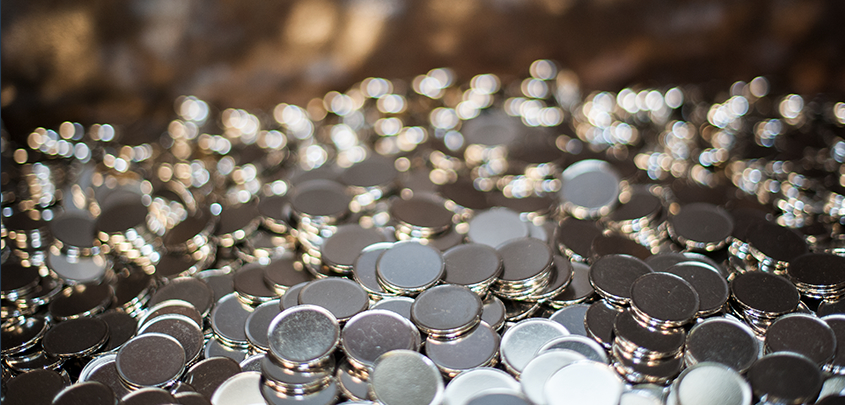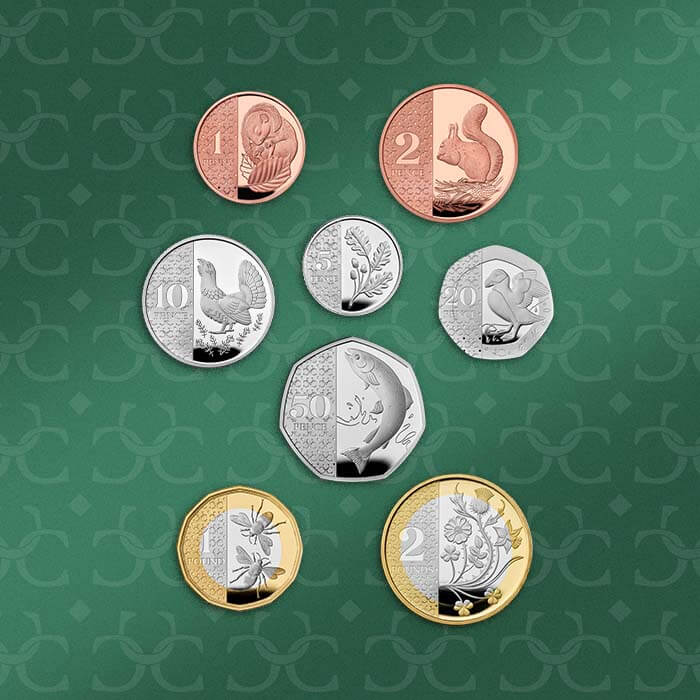There’s a lot more goes into making the coins we all use every day than you might think.

Each coin denomination is made from an alloy, which is a mixture of metals. The process begins by melting the appropriate metals in exactly the right proportions in a furnace. The furnace produces a long strip of the alloy that is then cut into coils that weigh up to 2.8 tonnes.
The strip is passed through powerful rolling mills that reduce it down to the thickness of a coin. Discs of metal are then punched from the strip by a blanking press. The press can make up to 10,000 discs a minute. These are called ‘blanks’.
Rolling metal under great pressure makes it hard so the next thing to do is soften the metal. To do that it’s heated in an annealing furnace at temperatures of up to 950°C. The blanks are then cleaned to make sure there are no marks or blemishes.
Once a coin design has been approved, a model of the coin is made.

This will often be made out of plaster, and will be many times larger than the final coin. A ruby-tipped probe scans the model and stores the image as a digital file on a computer.
An engraving machine then uses the digital file to cut the design into a piece of steel that’s the size of the final coin. This is known as a ‘reduction punch’ and will be used to make the dies that will actually strike the coins.
For the final part of the process, the blanks are fed into a coining press that contains a pair of dies. Applying a pressure of around 60 tonnes, the dies strike the blanks and turn them into coins at speeds of up to 850 strikes a minute.



